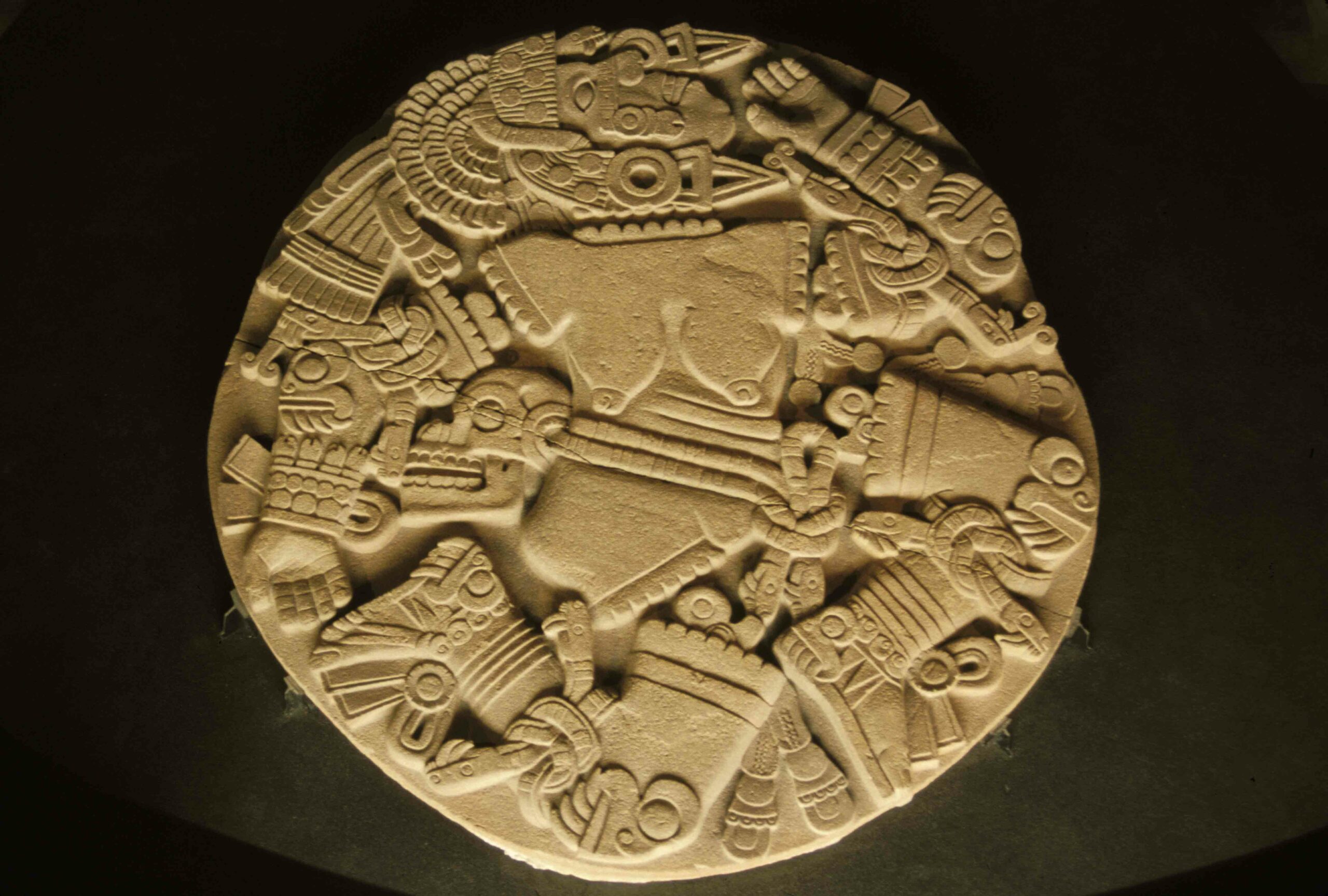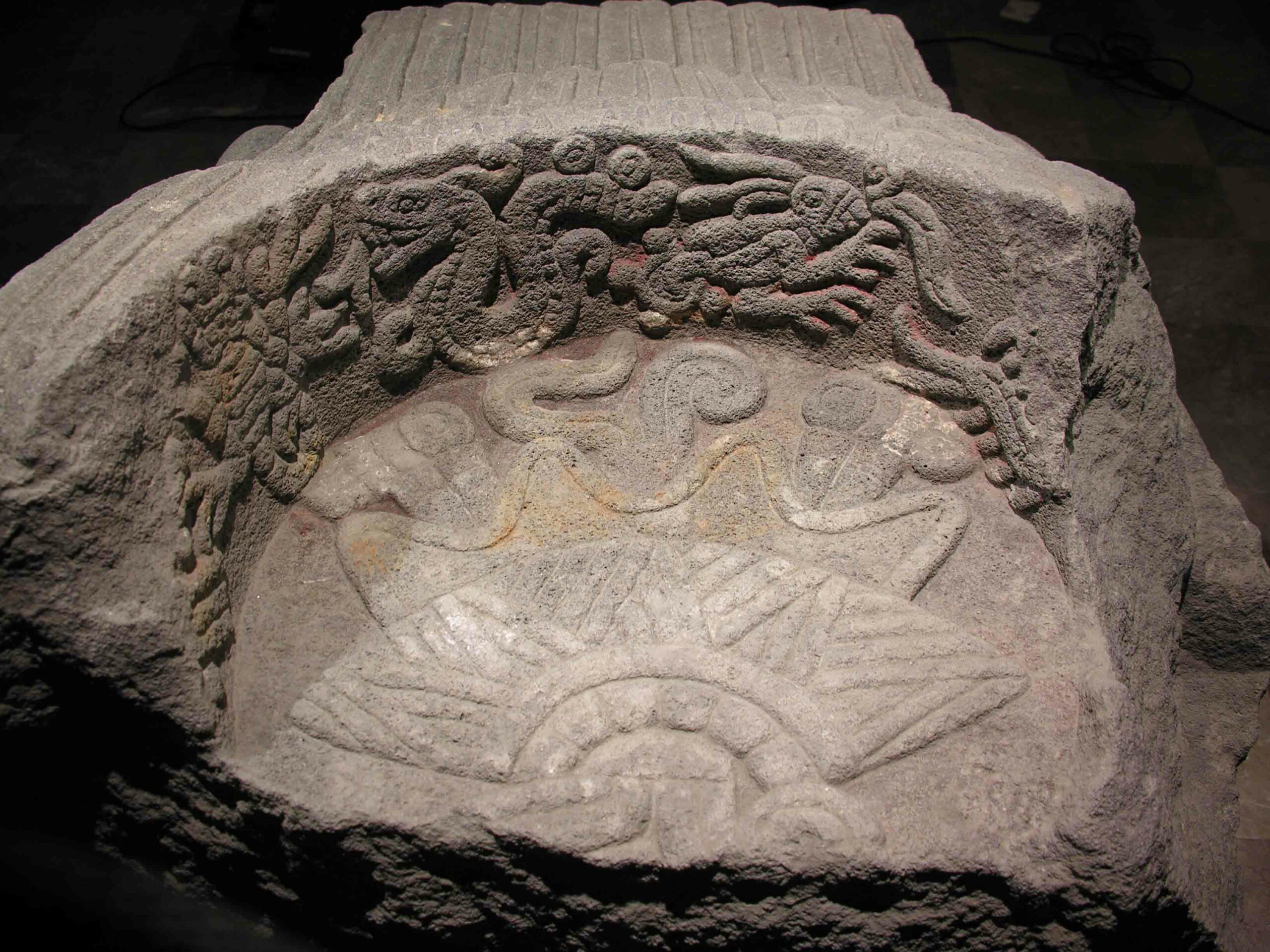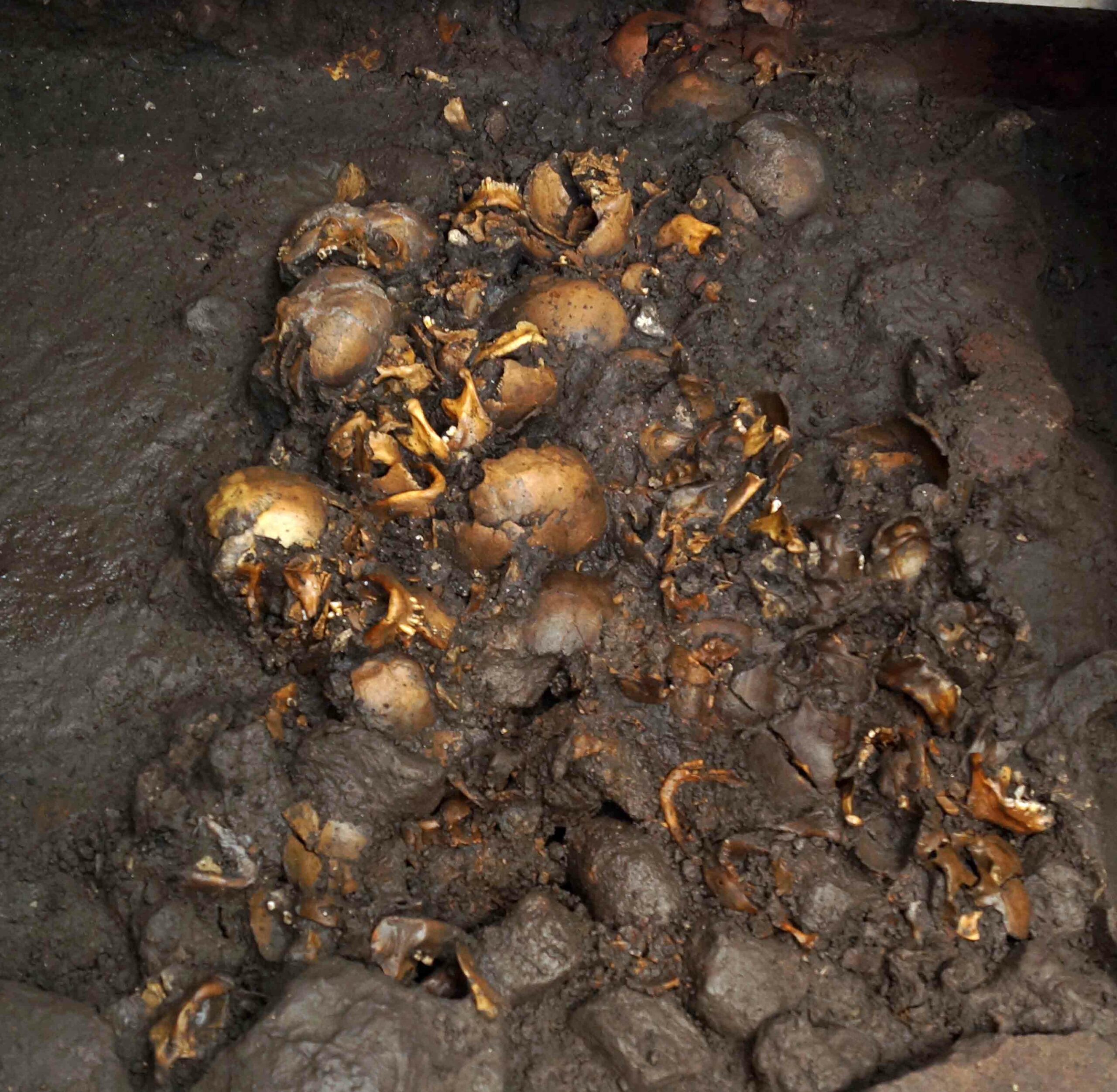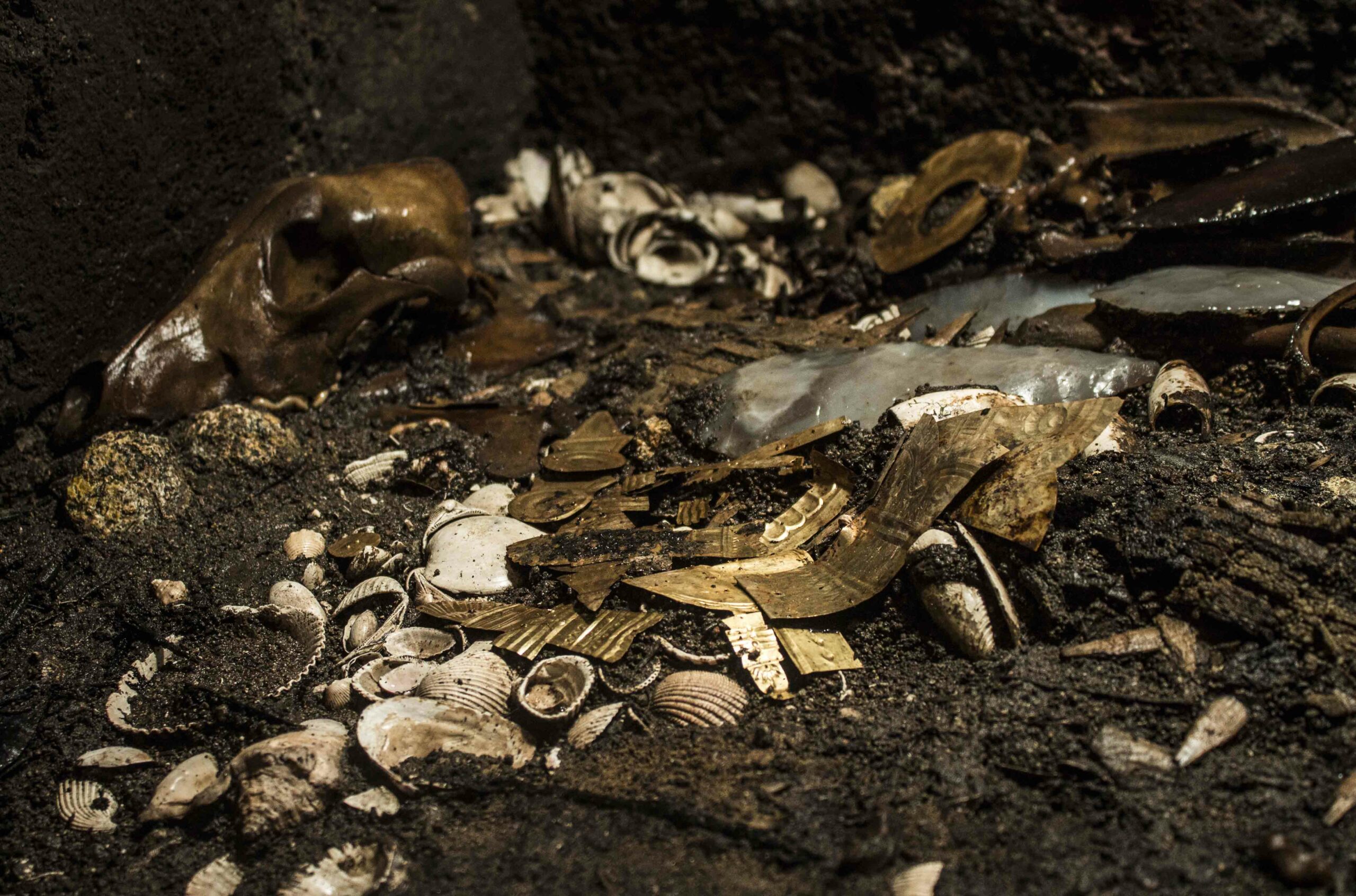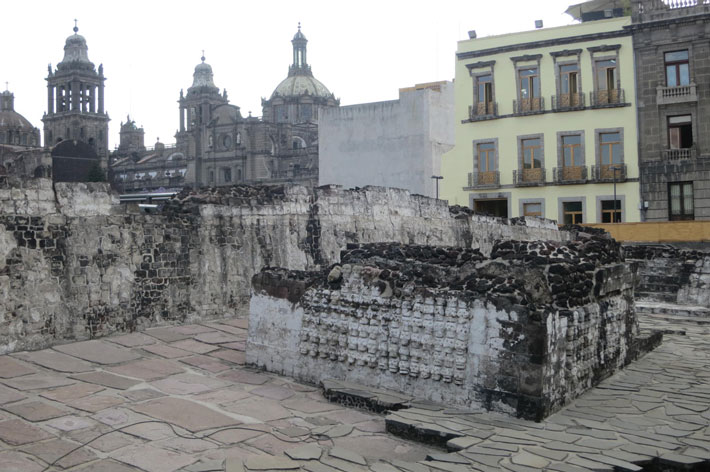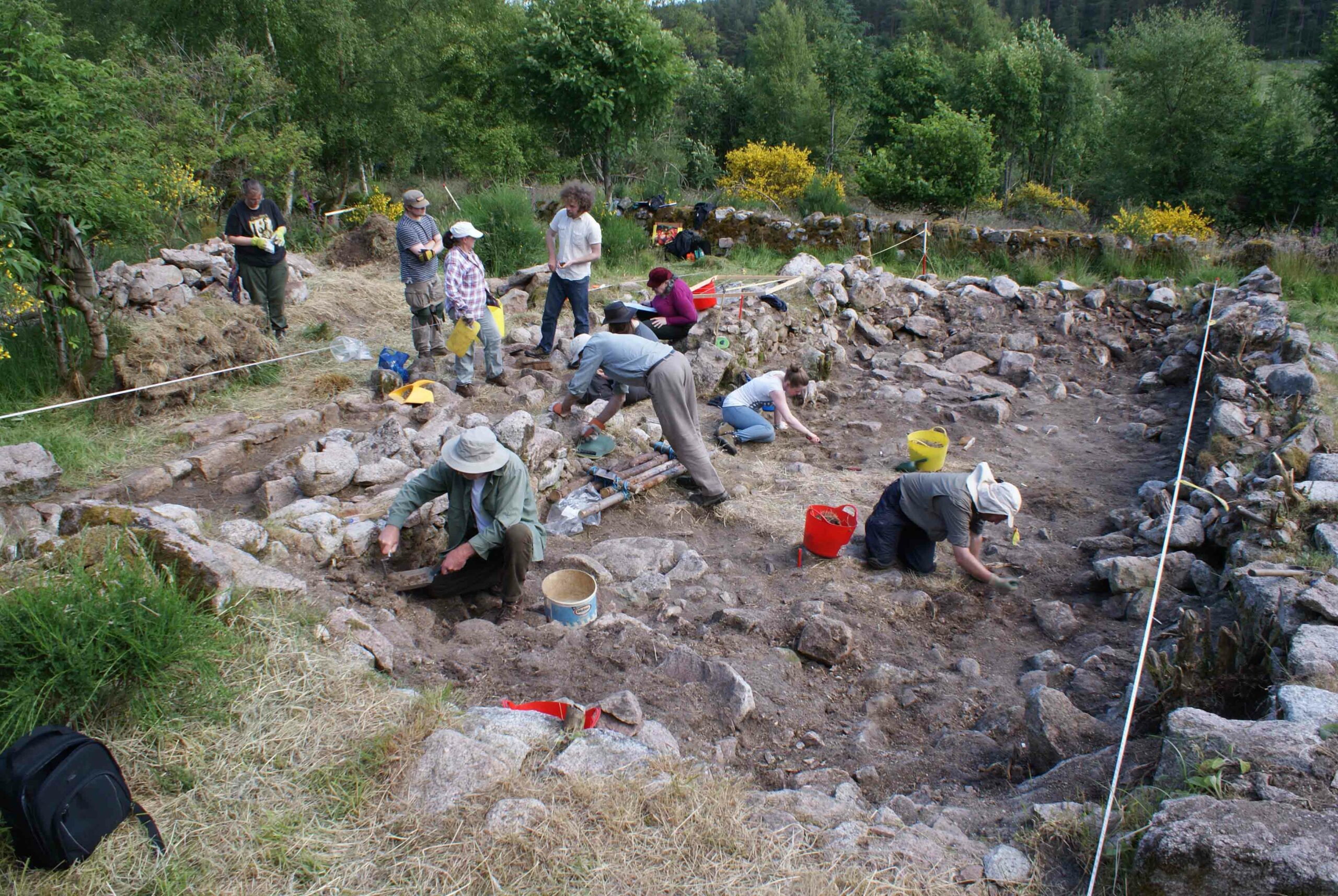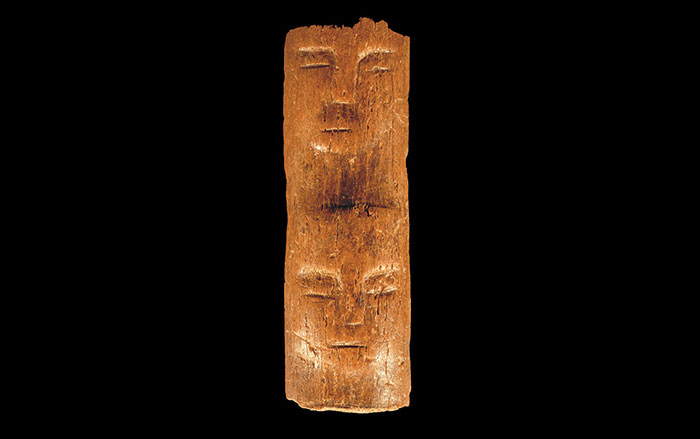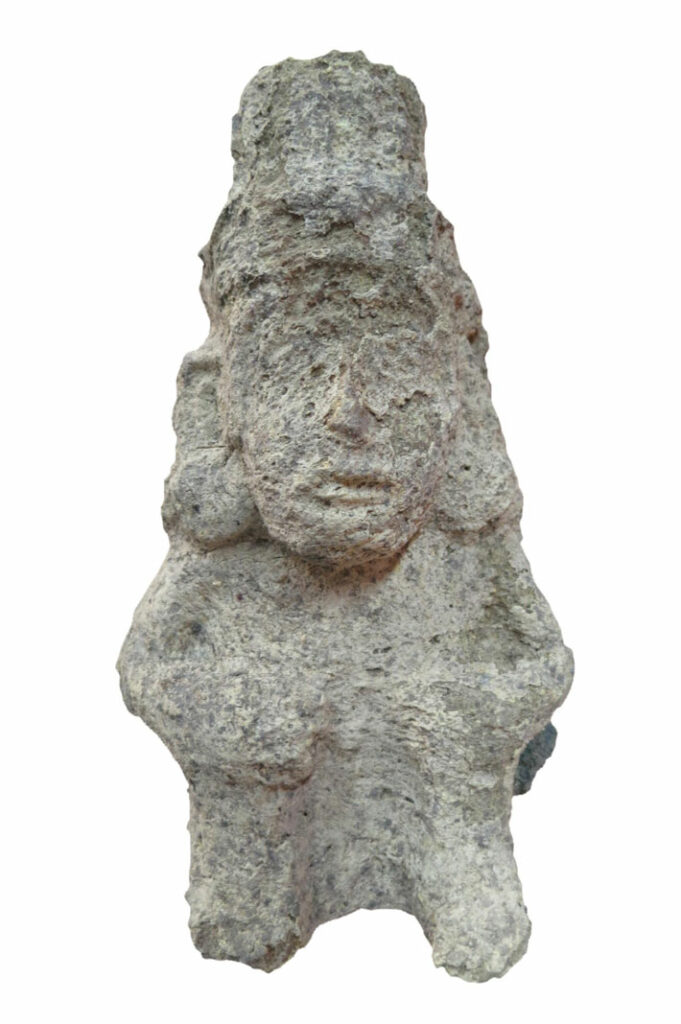
Despite their reputation for violence, the Aztecs had a finely honed taste for the delicate, the exquisite, and the fragrant. They adored flowers, perfumes, brightly painted walls, and epic poetry. In 2009, archaeologists began uncovering artifacts and human remains beneath a quiet square adjoining the Templo Mayor site, known as Plaza Manuel Gamio. These excavations have already yielded a great deal of information about Aztec life, death, and worship. Included within the burials, beneath a volcanic stone used for human sacrifices similar to those described by the Spaniards, were five human skulls with holes bored into their temples. In the time of the emperor Moctezuma I, who reigned from 1440 to 1469, the skulls had been placed side by side on a stake and displayed publicly in a structure known as a tzompantli, or “skull banner.” Botanical remains demonstrated that the skulls had once been adorned with delicate cornflowers, cotton blossoms, and cactus thorns. Laboratory tests concluded that the five skulls belonged to three women and two men, all young adults whose skulls were perforated postmortem. Analysis of the isotopic content of their teeth indicates that three of them had spent their childhoods far from the Aztec capital, probably in southern Mexico, suggesting they were migrants to the city or prisoners of war.
Nearby, researchers found a statuette of a seated woman made entirely of copal, an intensely aromatic tree resin that, more than 500 years later in the PAU laboratory, still emits the sweet, eucalyptus-like aroma that perfumed the dead. And a few feet away, in a contemporaneous deposit, archaeologists found 47 sahumadores, or clay incense pots, all meticulously arranged in rows and showing signs of intensive use. The long, protruding handles of some pots contained tiny pellets that, when the pots were moved, made a sound like a rattlesnake. Aztec priests are believed to have packed these incense pots with coal, copal, and other aromatic substances for use in ceremonies that filled the senses and masked the odor of death. “They used incense to sweeten the air, but also to purify the space and please the gods,” says Lorena Vázquez, a PAU archaeologist. According to Vázquez, the pots also held some kind of protein, possibly human blood.

A more grisly find awaited archaeologists a few feet away—the skulls, jawbones, and vertebrae of about 500 people, including at least 10 children, in two tightly packed deposits. Before they were buried under an altar, the bones had been painstakingly prepared. They were stripped of their flesh and, judging from weathering stains, dried outdoors before burial, says María García Velasco, a PAU conservator. “These people weren’t thrown there like garbage,” she explains. “They were treated carefully, as befitting a ceremonial burial.” Surprisingly, Velasco adds, none of the skeletons analyzed thus far shows any sign of major trauma. PAU director Raúl Barrera believes that all the remains were buried at roughly the same time, and that they were all related to a single ceremonial event. Since both the human remains and the sahumadores were found under a stone-and-stucco floor, the event may have been a “closure” ceremony in which a part of the temple was built over and buried.

Looming over the deposit was a 40-foot-wide circular platform carved with stone serpent heads, their mouths agape. Historical sources speak of the platform, or cuauhxicalco, as the place where the remains of the Aztec rulers were publicly cremated. Their ashes were then placed in ceramic urns and buried. A few feet away from the cuauhxicalco, Barrera found the withered trunk of an oak tree that grew in a kind of large flowerpot. Spanish accounts mention ceremonial trees planted near the Templo Mayor festooned with strips of colorful paper, and, according to Barrera, this was surely an example. Taken together, the bones, the tree trunk, the serpents’ heads, and the thousands of smaller artifacts that have been found are creating a rich picture of ceremonial life in the Aztec heyday.



